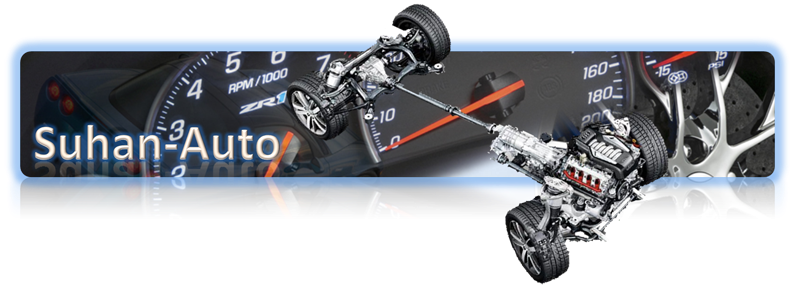 IMG Ref: www.audi.com (Click on the picture for a high resolution image)
IMG Ref: www.audi.com (Click on the picture for a high resolution image)Asymmetric/dynamic torque distribution, with a rear-biased split, allows the exceptional driving forces produced by powerful engines to reach the road even more efficiently. It reacts to conditions on the road more responsively. And with more agility on tight bends, it delivers a more exhilarating performance than ever.
Better Traction
State 1: Ideal driving conditions
If more traction is required – when towing a trailer, for example – quattro offers real advantages by offering greater tractive force in proportion to the vehicle’s weight.
State 2: Only 50 percent grip
In conditions where tyres experience reduced grip – as on a wet road – the advantages of quattro immediately become apparent. Whenever one wheel loses traction the others can compensate, so the car remains stable and continues to grip the road.
State 3: Only the front wheels have grip
quattro continually adjusts to road conditions to permanently distribute power between the front and rear wheels precisely where and when required. It means the vehicle stays responsive even if only one axle has enough grip. By contrast, if front- or rear-wheel drive vehicles lose grip at the driven axle, they can no longer transmit the engine’s power onto the road.
The self locking centre differential
The self locking centre differential sits at the heart of quattro on models with the engine positioned lengthwise along the car’s centreline.
Operating entirely mechanically, it continually reacts to road conditions and responds to any differences in the rotational speeds between the wheels. This ensures more power is always transmitted to the wheels with a better grip.
In addition, the Electronic Differential Lock (EDL) can act when needed to prevent the wheels from spinning. Excess power at one wheel is diverted to the other wheels that have more grip, maintaining traction in virtually every situation.
quattro for cars with transverse engines
To ensure the optimal distribution of engine power for each model, Audi uses specially configured all-wheel drive systems that vary in design.
The Haldex clutch is an electronically-controlled multi-plate clutch. It performs the function of the Torsen centre differential in cars with transverse engines, such as the Audi A3, A3 Sportback and Audi TT.
It ensures that engine power is permanently distributed between the front and rear wheels as and when required.
The Haldex clutch works by reacting to differences in the rotating speed between the front and rear wheels. This causes variations in the system’s hydraulic pressure, which in turn compress the clutch plates together to balance the distribution of power between the front and rear wheels. So if the front wheels begin to lose traction, the Haldex clutch channels power to the rear. And the greater the difference in rotational speed, the higher the pressure applied to the plates – which means that more engine power can be transmitted to the rear wheel.
There are six generations (unofficial) of quattro Evolutions.
The latest one is the 6th generation of quattro in the 2010 RS5. The key change in generation VI is the replacement of the Torsen Type "C" centre differential with an Audi-developed "Crown Gear" differential. The net result of this advance in quattro is the ability of the vehicle electronics to fully manage the vehicle dynamics in all traction situations, whether in cornering, acceleration or braking or in any combination of these.


Self-locking crown-gear centre differential
IMG Ref: www.awdwiki.com
Reference:
http://www.audi.co.uk/home.html
http://www.awdwiki.com/quattro.html


This enhances lateral acceleration and at the same time ensures the highest possible level of safety. lexus wheels
ReplyDelete